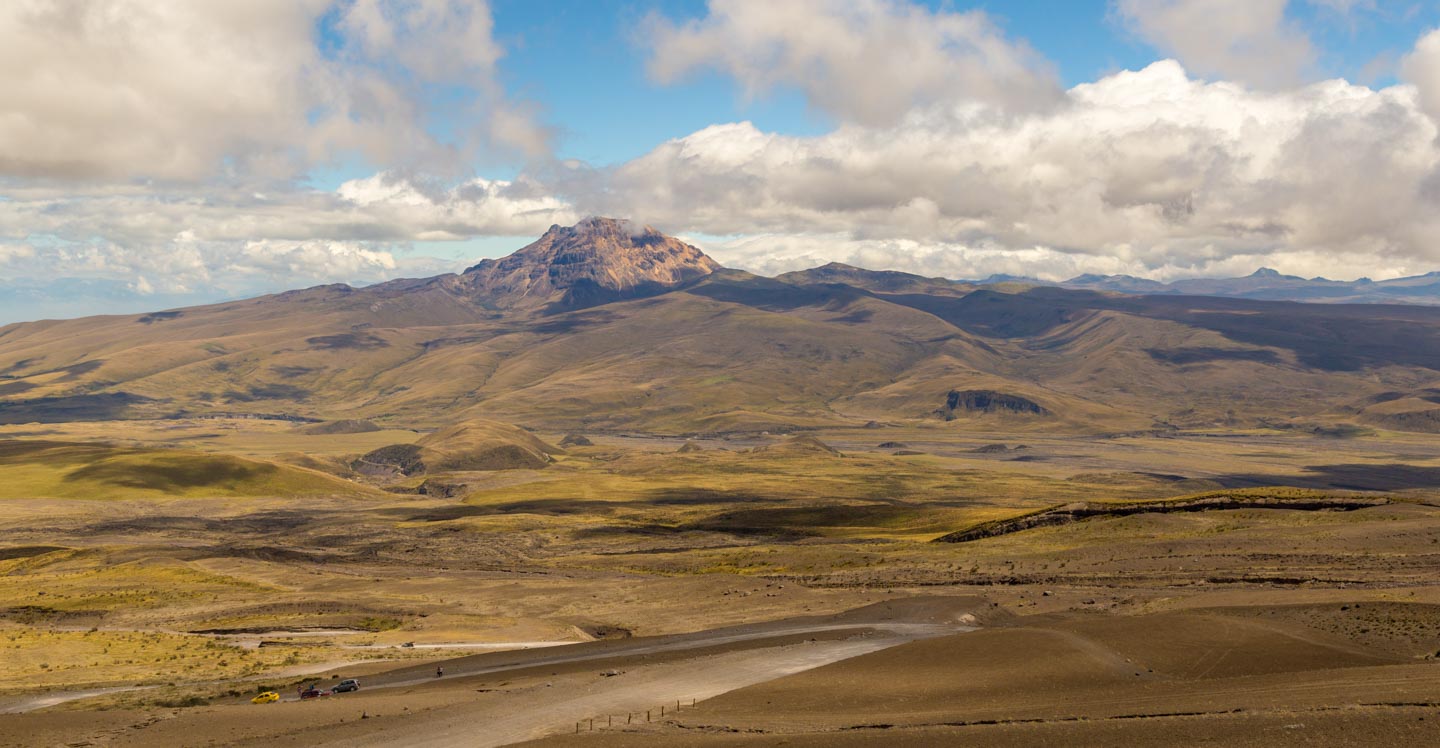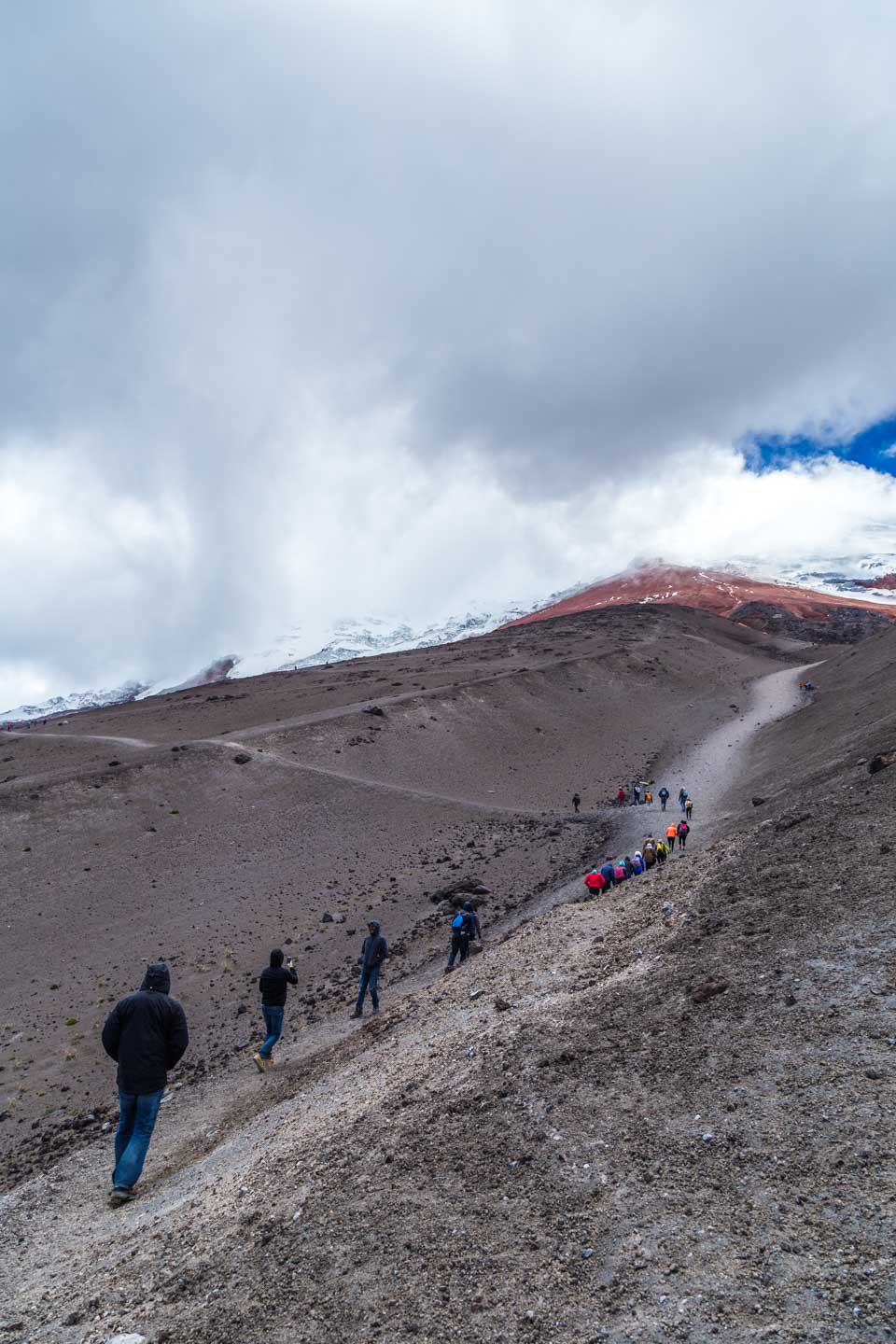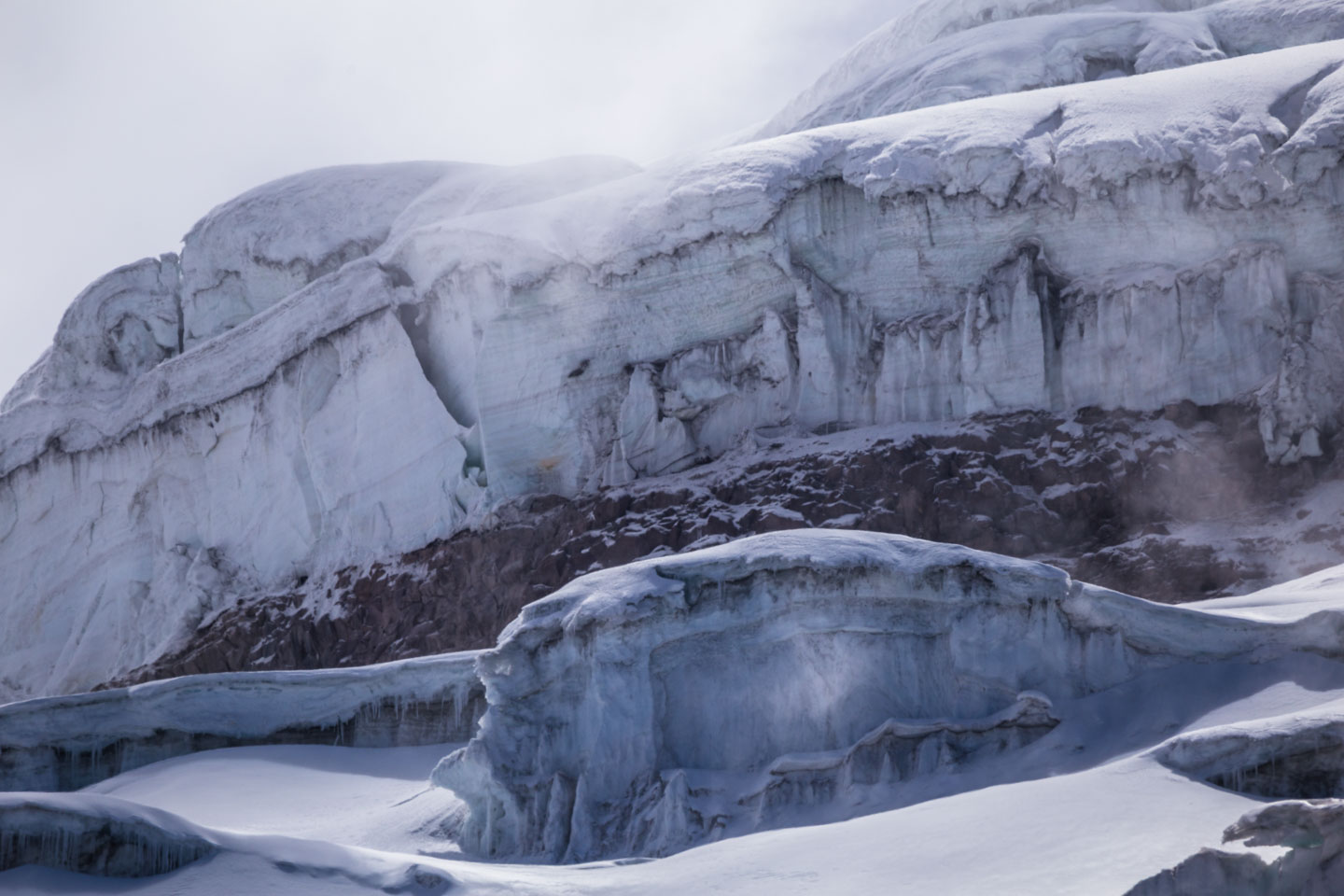One of the highest active volcanoes in the world at 5,897m (19,347 feet), Volcán Cotopaxi is only second to the Galápagos Islands when it comes to the most visited attractions in Ecuador. Being only 50km south of our base in Quito, we couldn’t miss the opportunity to visit it, especially since day-tours there are easily arranged.
Luckily, the rain held and the day was clear enough for great views of the massive volcano towering over the bushy highland plains. In many ways Cotopaxi looked more like a snowy mountain than a volcano, with its peak topped by a glacier and snow. We marveled at the beauty of its almost-perfect conical top and all the variation in colors from bottom to top, green to brown to red to white.

After a short photo stop, our bus continued to climb the windy and bumpy dirt road on the side of the volcano. At one point the gravel road was loose and the bus had trouble making it up the hill – quite a few people on the bus were scared, but we were unperturbed as it was nothing compared to what we experienced in Nepal. After passing many stuck cars, we reached the parking lot at 4,600m (15,092 feet) of altitude. Having come from the Galápagos Islands at sea level just two days before, we definitely felt the altitude and started breathing heavily. Even more so after seeing the breathtaking views of the plains and surrounding mountains.

Climbing Cotopaxi
Up to this point, all we had to do was sit in the van while it did all the hard work of climbing for us. That was about to change, however, as our guide announced the beginning of the hike to Refugio José Rivas, a refuge located at 4,864m (15,958 feet).

This may not sound like a hard hike – an elevation change of only 264m (866 feet) – but the high starting altitude made it very tough. Just a minute or two after we started the ascent, we already had to stop to catch our breaths. The steep trail combined with the altitude and lack of acclimatization was taking a toll on us. For every 15 steps we took, the same pattern repeated over and over again – stop, take deep breaths, enjoy the view and get ready for more. Everyone on the tour had a similar rhythm.

It has never been so difficult to climb just a few hundred meters/feet. We were constantly out of breath. The wind also didn’t help – at times it blew against us so strongly we literally struggled to move forward.

With a final push, we finally made it to the refuge feeling pretty accomplished. We do a good amount of hiking normally, most of which have much higher elevation gains, but somehow this one felt especially satisfying to complete, fighting against the slowness and sluggishness of our bodies.

After a short break at the refuge, we continued to climb the volcano up to one of the few glaciers that exist at this latitude near the equator. At 5,000m (16,404 feet), this part of the hike was steeper and more challenging. We went as far as we judged necessary to enjoy the views of the glacier, making sure not to push ourselves too hard. Enjoying the glacier’s dwarfing size, we sat down and imagined the brutal eruption that had happened here just 2 years ago, temporarily closing the park and spreading ash throughout Quito and the surrounding area.

What goes up, must come down. Fortunately the way down was a lot easier, and we half-ran our way back to the parking lot. Our tour included an option to mountain bike the way down the volcano, which while thrilling, we chose to pass on given we have zero experience mountain biking.

Everyone was exhausted by the time we came down, and we enjoyed a last few glimpses of Cotopaxi as the clouds rolled in and covered the top. What an eventful day! We headed back to Quito with incredible memories, a sense of accomplishment and new friends. A mild headache from the altitude also, but nothing a good night of sleep can’t fix. If anything this helped us to acclimatize for the rest of the trip. We felt the difference already the next day, at Quilotoa Lake, another gorgeous volcano near Quito.

